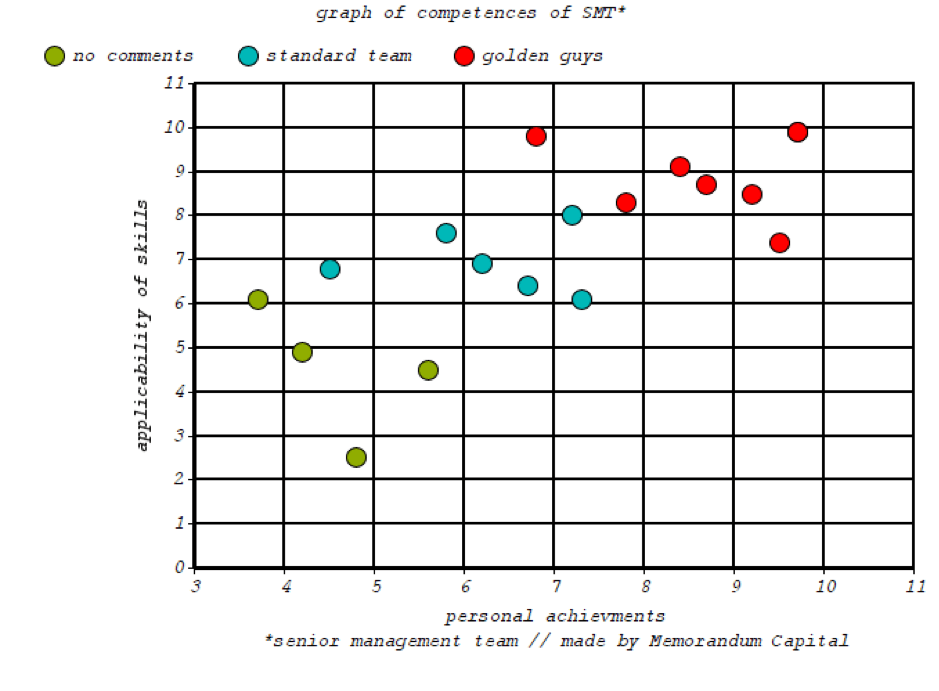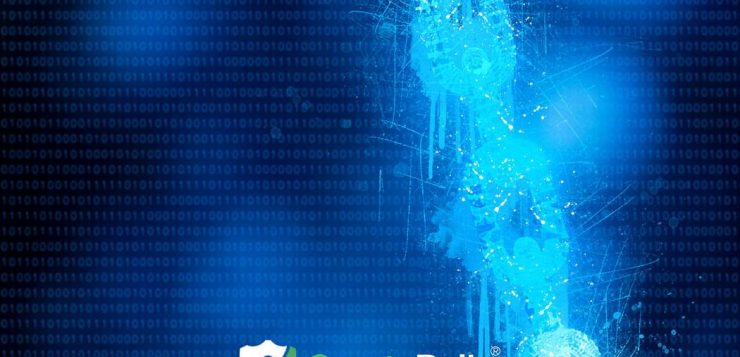ABSTRACT: Investors are faced with a lot of problems in the modern blockchain world: one of them is finding the right way how to objectively decide if the project they want to invest in is going to succeed. As opposed to the financial due diligence objective analysis of the startup requires a great number of special skills, the assessment of a team challenges one to use his social—and sometimes trivial—experience. Definitely, using your communicative background consciously in terms of carrying out the process of due diligence differs from using it subconsciously in the daily graft of yours. In this article, Ivan Aleksandrov, the CEO of Memorandum Capital, an investment company focused on Initial Coin Offerings and investing in blockchain-based assets, will share his vision of this crucial stage of startup analysis—analysis of a team.
———————————————————————————————————————
Initial crypto hype is over, yet another Christmas Night Tale has ended by sober dawn. It is not a secret that a great number of first ICOs that were able to attract investments did not meet investors’ expectations what led to stagnation on the market.
However, I do not tend to consider the stagnation to be an inhibitory factor, on the opposite, the industry is still there and investors are still looking into blockchain-based projects. What they need now is a solid base for investment decision-making. Relying on the intuition and marketing promises of project’s sites and brochures just don’t work any more. One needs some systematic and well-argumented intelligence to rely on. And this is where traditional well-proved methods of venture capital investment start to work.
Of course, it is not enough to apply them to analyzing blockchain projects—one needs to take into consideration specifics of the industry. One of the key features differentiating ICOs from traditional attraction of funds in the Venture Capital model is the fact that the startup sees a major investment flow on its earliest stages. As opposed to the Venture Capital world where investments are being attracted gradually.
By the time the project scores its first significant deal on 5 million and more, it already has the product, the client base and successfully functioning business model on the market that together form the subject for conscious assessment. Having made an investment in ICO case during so called Series A Investment Round investors deal with the project from its early stages of development. As opposed to venture investor who has vast variety of information to consider when investing few hundred thousand, maximum a million at Pre-seed/Seed stage, ICO investor usually has way less information and way less time to decide on an investment of several million and more.
It requires raising standards for all the project’s assessment criteria, especially for the team. Based on my experience, the team of the project is a key to success, it is more important than the concept. Dream team may find the way to modify initially unimpressive concept to somеthing attractive to the market!
The analysis of the project’s team can be divided into 3 stages: the first one is accessible to any investor, the second requires some time and effort, and the third can only be implemented within the framework of thorough Due Diligence. Now I will tell you about some instruments that will help you in following our path.
The first stage of team assessment evolves around the work with public information. We start to explore the founders’ background—their experience and competences. We use the so-called “graph of competences” to record our assessment, where persons’ achievements are displayed on the horizontal axis and applicability of previous working experience and how well the person understands the situation on the market is reflected on the vertical, respectively. Such graph provides us with a clear understanding of the company’s management potential. Company’s Senior Management Team comprises from the professionals of different background, however, the “constellation” on a graph gives a clear picture of combined SMT’s expertise.

Just to give you an example: highest mark on the horizontal axis will be given to the CEOs with the previous experience of startup exits. It is important to understand that the project that started successfully although got stuck or even failed in the middle of the read is a failure all together, only completion the exit strategy makes the project successful. It demonstrates that the founder has a strategic vision and the ability to plan as well as an understanding of operational business and experience that can help to avoid mistakes. These so-called “golden guys” are followed by the CEOs of the companies and owners of SMB with middle-managers being displayed on the left side of the graph. Those who have launched similar product are positioned on the top, according to “the rules of thumbs” on the vertical axis. Next are portrayed people with some industry experience followed by the managers from relevant fields. People with no relevant experience are placed towards zero[fig. 1].
There is a wide-spread prejudice that crypto world is for the young people, however, according to Age and High-Growth Entrepreneurship, a research by Azoulay, Jones and Kim, the solid age of the founder is very often a valuable asset as it is synonymous to good judgment and managerial experience.
I can also add, based on my observations, that companies with only one founder lack stability in the long-run as opposed to companies with several founders. An opportunity of consolidation of power in the hands of one person should be seen suspicious. Moreover, it is better if founders have already worked together as it reduces the risks of confrontation and ineffective work.
This being said, I would like to proceed to the analysis of the “power” of the team with the focus on the number of team members and their involvement in the project (a large number of part-time team members does not benefit the final outcome). Sometimes in order to impress the investor startups just add their friends and family members to the list of team members – although this can be easily traced. I would recommend to look at the parallel development of the careers of key team players. This can be easily traceable via their LinkedIn profiles.
Apart from the qualifications, it is important to look at the general atmosphere and corporate culture of the team.
The line-up of advisors is the vitrine of the project. Their regalia are supposed to impress the investors. It is important to check if their achievements are relevant to the industry and how well they are connected as their network is sometimes the most valuable asset they contribute to the project
The general assessment of the first stage is aimed at digging through the marketing layer of its image that is almost often meant to create a good overall impression and conceal its drawbacks. One needs to be alert and skeptical.
The second stage is comprised of personal communication with the founders. Usually, it is conducted in the format of an in-depth interview and requires being well-prepared. It is obvious that average private investor will rarely have an opportunity to interview the founder the way we do. Even though, being persistent he can get a lot of information asking question in project’s telegram chat. The founder would have to address your requests and answer your questions simply due to the fact that chats are being read by thousands of other users.
Questions asked at the interview cover a broad range of aspects: how the company is being managed, how the company is structured and what role the advisors play. Founders will gladly talk about their achievements and successful projects – this will also give some ground for building person’s profile. It is crucial to find an opportunity to talk to the employees of the company, as they can give you a different angle on key issues; sometimes their answers to the same questions can differ. It is good to know what task&project management tools are used by the project as it indicates level of expertise in project management It would not hurt to establish communications with key employees. Imagine that you are hiring each of them and analyze their qualifications.
General atmosphere of the team is also extremely important—crypto projects are usually developed in the rush with employees being under the immense pressure. The objective of the second part is to try out the people who you are going to entrust your money to and understand how honest and open to the conversation with investors they are.
Upon the completion of the second stage, one might have a fairly clear picture of the business in general and ready to proceed to the third, the most interesting stage—Due Diligence itself. There are low chances for an unprepared entrepreneur to do it perfectly as it requires the resources and access to all the employees from the founders. However, I am willing to share my personal methodology based on my professional skills of conducting DD.
It is a common misconception that Due Diligence is “smoke and mirrors,” a special, secretive know-how. In reality, it requires two things: thoroughly checking all the information received on the previous two stages (the overall impression quite often tends to be corrupted or incomplete) and complementing this information with missing parts of the puzzle. First task requires double-checking every detail of your communication with the founders or other team members. It can be done through telephone calls to former co-workers or employees and comparison of all the facts. Such information found on open sources as social media profiles of the employees and publications about the founders and advisors can also become a valuable addition to the factual data about the startup
Second task involves gathering of information that was left out for any reason. It might have been deliberately or unconsciously concealed, but, regardless of that, one will not be able to complete the 3rd stage until having answers to all of the questions. It can also be useful to “compare notes,” answers to the same questions given by different people. Playing a spy by emerging yourself into the corporate culture as deeply as possible through friends and common networks and trying to become an integral part of the team without leaving any traces of your presence is another technique of getting a full understanding of the startup.
It will never hurt to ask oneself a couple of questions: can this team be trusted? Are the founders motivated enough? Will they be able to go until the end? Do they have necessary competences? What kind of people do they have in their team? These are the questions every venture investor asks before deciding to invest in the startup.
Every time the progress brings new technology to existence, the enthusiasts argue that it cannot be managed, measured and analyzed by old-school, traditional methods. However, we tend to think oppositely as our broad experience with blockchain-based projects provides for a different wisdom: classical methods of Venture Capital are of great use in the Brave New Crypto World and create a solid and objective basis for investors’ decision-making.
——————————————————— ———————————————————–







